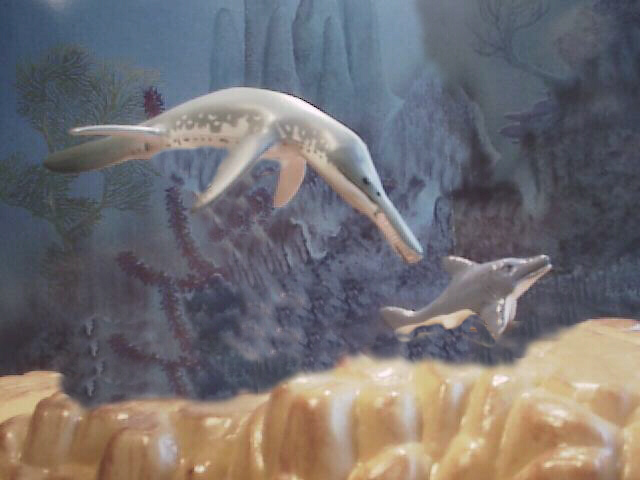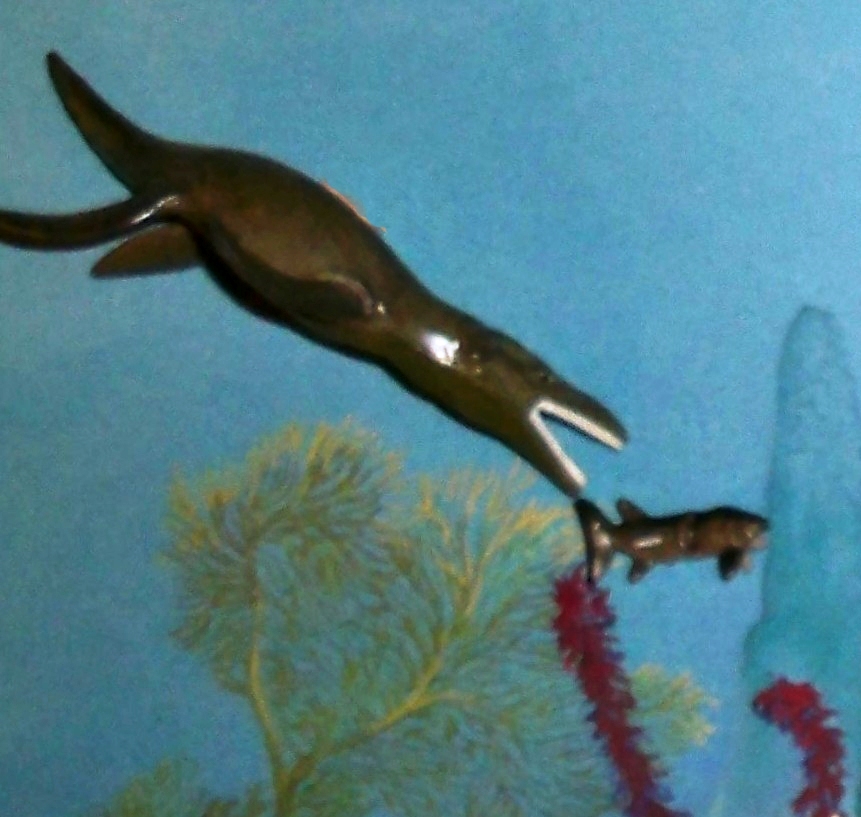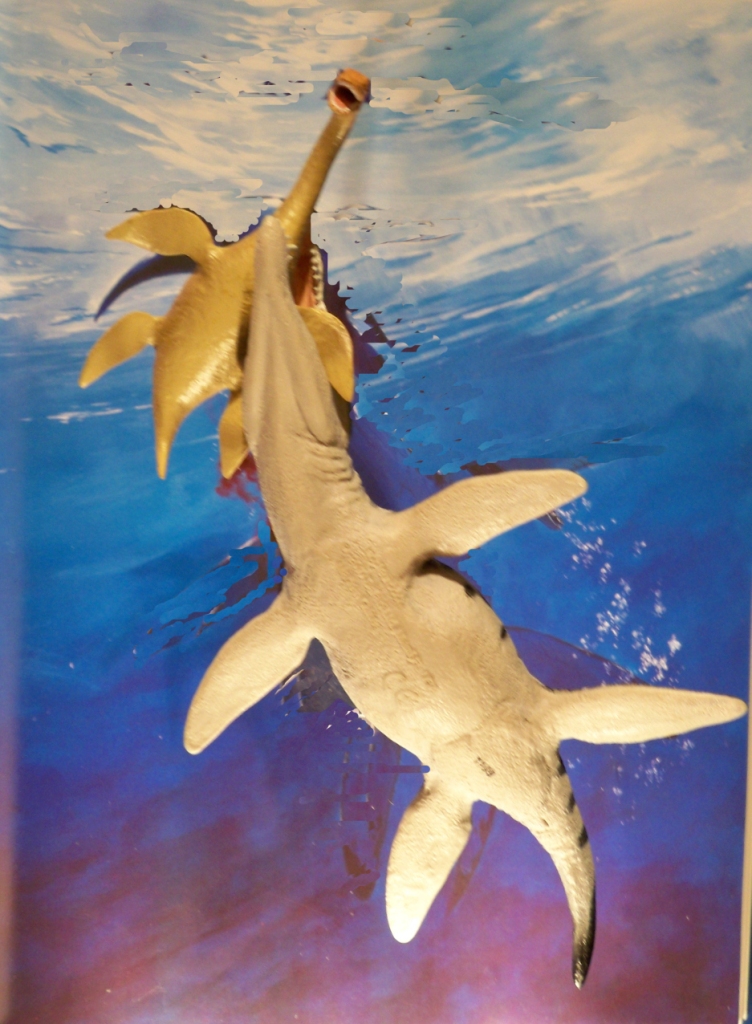
The Seas of the Mesozoic
from the Dinosaur Collector
 |
The Seas of the Mesozoic from the Dinosaur Collector |
Pliosaurs from the Late Jurassic
Pliosaurs had a short neck and an elongated head, with long and powerful jaws having sharp, conical teeth. Pliosaurs range from 4 to 15 meters and more in length. They were the top predators from the Early Jurassic until the first part of the Late Cretaceous. Their prey included other marine reptiles, marine birds and giant squid. The last record of the giant predators is from the first part of the Late Cretaceous. This may have been caused by changes in ocean cirulation resulting in hypoxia. Hypoxic zones are influenced mostly by the variations in upwelling, Upwelling is a process of deep ocean water that is nutrient rich moving from the bottom of the ocean up to the near-shore surface. These nutrient rich waters are what drive the ultra productive waters. Problems arise when the nutrient flow from deep water stops. Much of the plankton life that was blooming will then begin to die-off. Bacteria and other decomposers kick into high drive and deplete the oxygen content from the water. This would break the food chain and devastate the top predators like pliosaurs and ithyosaurs. The smaller pliosaurs endure until the end of the mesozoic.
Updated 06/22/2011
More Diorama Pages
LATE JURASSIC
|
Liopleurodon was big 16 - 23 feet. The Walking with Dinosaurs Liopleurodon length of 80
feet is an extreme estimate. |
Liopleurodon was a pliosaur the tiger of the sea preying on sharks, large
squid and ichthyosaurs. They ranged world wide. |
|
 |
 |
|
| Kaiyodo Dino Tales (Choco Egg) Liopleurodon and K&M Ichthyosaurus. | Safari Ltd Liopleurodon from Perhistoric Sea Toob. |
A powerful swimmer. Its four-flipper mode of propulsion is characteristic of all plesiosaurs. A study involving a swimming robot has demonstrated that although this form of propulsion is not especially efficient, it provides very good acceleration - a desirable trait in an ambush predator. |
 |
Wild Safari Liopleurodon. |
Two species of Liopleurodon lived during the Callovian stage of the Middle Jurassic Period (c. 160 to 155 mya), while the third, L. rossicus, lived during the Late Jurassic. It was the apex predator of the Middle to Late Jurassic seas that covered Europe. The largest species, L. ferox, is estimated to have grown up to 21 feet in length. |
Toyway and CollectA Liopleurodon. Hybodus from Safari Prehistoric Shark toob. |
![]() Previous back to Late Jurassic pliosaur
Previous back to Late Jurassic pliosaur
next To the Jurassic marine crocs ![]()